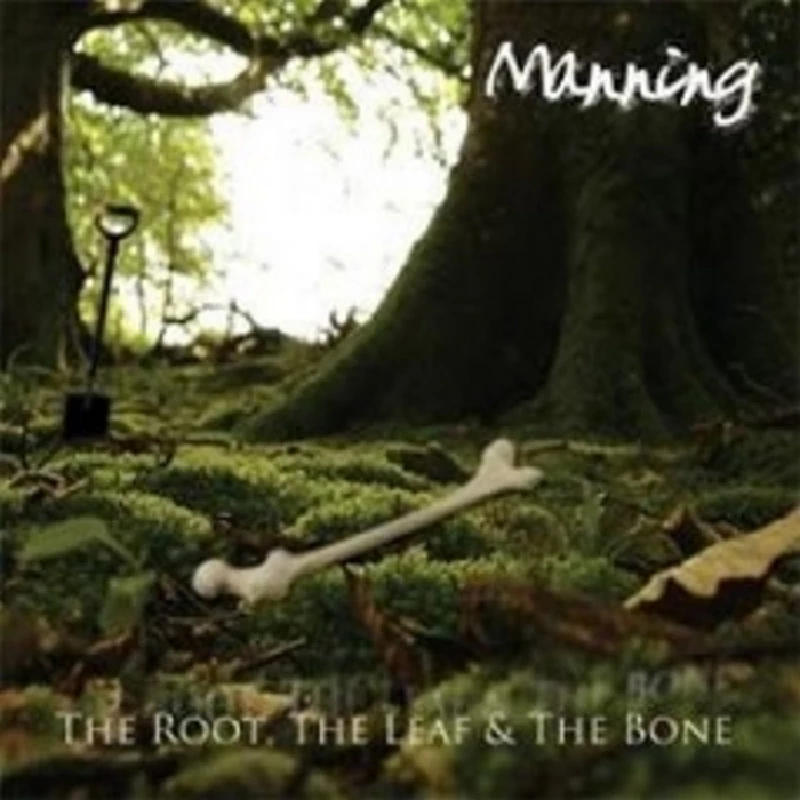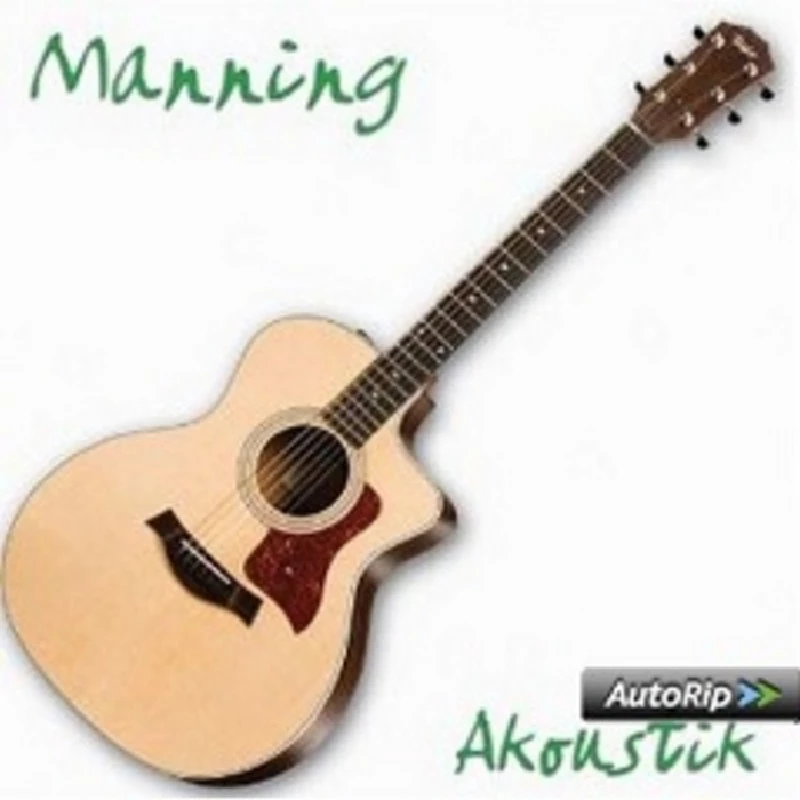Manning - Profile
by Malcolm Carter
published: 23 / 2 / 2014

intro
Malcolm Carter examines two recent releases by much acclaimed British progressive rock band, Manning
A major talent, Guy Manning has released a staggering fourteen studio albums since 1999, and although Manning and his chosen bunch of talented musicians have built up a solid following through those years it’s unbelievable that Guy Manning isn’t more well-known outside of the progressive rock circle. Guy Manning is one of those multi-talented musicians who can do just about everything; he wrote all nine songs on ‘The Root, the Leaf and the Bone’, arranged and produced the whole thing and plays acoustic six and twelve-string and classical guitars, drums, bass, mandolin, keyboards and the wonderfully named diddlybow and that’s far from a complete list. Manning does have a regular band though. David Milton supplies the electric as well as some acoustic guitars and banjo, Kris Hudson-Lee plays bass and Rick Henry helps out on percussion and Julie King’s wonderful vocals add texture and another dimension to some of the songs. There’s also a not so short list of special guests who have helped to bring Manning’s songs to life. Although too long to reproduce here some names will be familiar to those who appreciate real music. Chloe Herrington (Knifeworld, who recently made an appearance on Dodson and Fogg's ‘The Call’) plays bassoon on ‘Autumn Song’, Toxic Smile’s Marek Arnold lends his skills on the saxophone to the project and Lifesigns’ John Young provides an organ solo on the track ‘Old School’. Just those few names will be enough to entice those unfamiliar with Manning’s previous work to give his latest offering a chance. Manning’s last album ‘Akoustik’ reworked some of the songs from his entire back catalogue, and showed that Manning’s songs didn’t need layers of different instruments to be affective. The songs weren’t as bare or stripped-down as the album title might initially have you believe. but the dozen songs Manning picked for the album were certainly presented in a different and new way and more than anything it highlighted just how strong Manning’s songs are and what an exceptional vocalist he is. Yes, as usual there are traces of Jethro Tull’s Ian Anderson in Manning’s vocals, but it’s not a factor we should dwell on too much. To these ears there is more of Manning’s own vocal style than Anderson’s anyway, but although it’s a lazy comparison it’s not a bad thing to mention for those who have yet to discover Manning’s musical world. It’s been a while since a Tull album offered the variety displayed on a Manning collection or was as satisfying as ‘The Root, the Leaf and the Bone’ is. So, now Manning has the acoustic thing out of the way (maybe for a while at least, the fact that it was so well received must make a similar project in the future a possibility) he’s returned to a full-band sound for ‘The Root, the Leaf and the Bone’ and what a return it is. While loathe to keep banging on about progressive rock, as it still conjures up the wrong visions in certain people, Manning really has this genre of music very neatly sewn up. Manning originally had thoughts of making a concept album centering around a faded village, which was "lost beneath the march of progress" but found that too restricting as some of the pieces didn’t fit neatly into that idea but they did fit into a "more general set of considerations about the nature of change." The majority of the songs all originate in the original village idea though and the whole album, although the songs can be appreciated separately, is best listened to as a whole, in one sitting so in some ways it still has that concept feel about it. ‘The Root, the Leaf and the Bone’ is one of those rare albums that demands not only your total attention for the duration and actually receives it. It’s one of those albums that you keep returning to time and time again to discover new sounds, one of those albums it’s impossible to tire of. Considering it’s over an hour long that’s some achievement; even at twelve minutes long the title track that opens the album goes through so many different stages you almost want to hit the replay button to experience it all over again. Manning’s lyrics as he describes the stripping away of surfaces are full of imagery and succeed in taking you with him on his journey. It’s a remarkable piece of music, superbly played and sung, and if ever a case has to be made about why so called progressive music is still so popular then here is the piece of music to be given as evidence. The way Manning describes the loss of the old to make way for the new is captivating; “the postal office corner shop is now the entrance way to a corporation leisure complex and carvery/ The homely hearth of the Speckled Hen is now a B&B where foreign bankers bring their girlfriends for sex and afternoon tea”. For all the Tull comparisons that the second song ‘Decon(struction) Blues’ will attract (and to be fair it’s the one song where Manning does sound more like Anderson than ever), the dominating flute only fuels the fire. There are touches that you’d never hear on a Tull album. There are traces of the blues in there, but the chorus is almost poppy and so undeniably catchy it’s almost daytime radio friendly. The song is one of those that was written with the original village concept in mind, the tearing down of the old without any thought given to what that actually entails. ‘Autumn Song’ is the one that didn’t fit in with the village idea, but it still holds with the whole nature/cycle theme that the album eventually developed into. Again Manning’s lyrics paint a picture so vividly. The music is more subdued on this track than on many of the others but is no less affecting for that, and the little flourishes weaving in and out of the song actually make it one of the most appealing and pretty songs on the album. ‘The Forge’ mourns the loss of craftsmanship to mass production, and is yet another outstanding piece of music where Manning and company pull you into the song. Given the length of some of these songs - and this particular one clocks in at eight minutes - it’s a testament to the power of Manning’s lyrics and the sound the band produces that you never once feel your mind wandering off during the song, The album ends with ‘Amongst the Sleepers’, a reflective piece which mentions 'Eleanor Rigby' and conjures up images of time spent recalling days past on a peaceful Sunday morning in a churchyard. Again it’s a stunning piece of music that really delivers so much to the listener. Guy Manning must be one of our most underrated musicians. We can only hope that he will eventually receive all the accolades that he so obviously deserves; ‘The Root, the Leaf and the Bone’ then, progressive rock for those who hate both the term and the music. This album is truly something else.
Picture Gallery:-

most viewed articles
current edition
Carl Ewens - David Bowie 1964 to 1982 On Track: Every Album, Every SongArmory Show - Interview with Richard Jobson
Colin Blunstone - Thalia Hall, Chicago, 16/7/2025
John McKay - Interview
Visor Fest - Valencia, Spain, 26/9/2025...27/9/2025
Bathers - Photoscapes 1
Billie Eilish - O2 Arena, London, 10/7/2025
Loft - Interview
Robert Forster - Interview
Sir Tim Rice - Interview
previous editions
Manic Street Preachers - (Gig of a Lifetime) Millennium Stadium, Cardiff, December 1999Heavenly - P.U.N.K. Girl EP
Beautiful South - Ten Songs That Made Me Love...
Oasis - Oasis, Earl's Court, London, 1995
Prolapse - Interview
Boomtown Rats - Ten Songs That Made Me Love....
Peter Perrett - In Dreams Begin Responsibilities Interview Part One
Coldplay - Wembley Arena. London, 16/8/2022
Trudie Myerscough-Harris - Interview
Pixies - Ten Songs That Made Me Love...
most viewed reviews
current edition
Davey Woodward - Mumbo in the JumboAmy Macdonald - Is This What You've Been Waiting For?
Sick Man of Europe - The Sick Man of Europe
Phew, Erika Kobayashi,, Dieter Moebius - Radium Girls
Lucy Spraggan - Other Sides of the Moon
Bush - I Beat Loneliness
Suzanne Vega - Flying With Angels
Alice Cooper - The Revenge of Alice Cooper
Blueboy - 2
Cynthia Erivo - I Forgive You
Pennyblackmusic Regular Contributors
Adrian Janes
Amanda J. Window
Andrew Twambley
Anthony Dhanendran
Benjamin Howarth
Cila Warncke
Daniel Cressey
Darren Aston
Dastardly
Dave Goodwin
Denzil Watson
Dominic B. Simpson
Eoghan Lyng
Fiona Hutchings
Harry Sherriff
Helen Tipping
Jamie Rowland
John Clarkson
Julie Cruickshank
Kimberly Bright
Lisa Torem
Maarten Schiethart